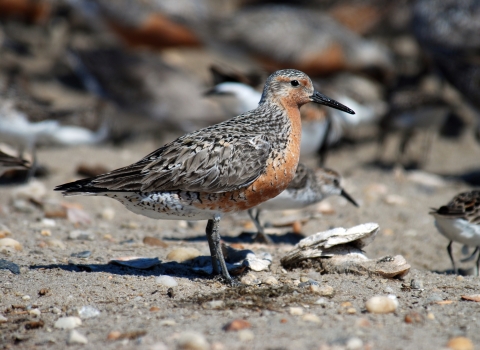Communication towers are important for our cell phones, radios, televisions, and public safety. Currently, the United State has more than 160,000 registered communication towers taller than 200 ft. above ground level, and more towers are built every year.
How do communication towers impact migratory birds?
Each year, nearly 7 million birds die due to night-time collisions with communication towers. Most of the birds that collide with towers are night migrating songbirds on their journeys to and from warmer climates for the winter.
Why do birds collide with communication towers?
We don’t know why birds collide with towers; however, research determined that the risk to birds increases when towers:
- Are lit with non-flashing lights at night
- Have guy wires for support
- Are taller than 350 feet
- Are located in areas with inclement weather
- Are located in areas with high densities of migrating birds flying nearby
- Are located along ridgelines, which brings migrating birds closer to tall towers
What can I do?
There’s a win-win opportunity for both communication tower owners and birds, and it’s as simple as switching to flashing lights on towers. By eliminating non-flashing lights on towers, we can reduce migratory bird collisions by as much as 70 percent while simultaneously reducing energy costs for tower owners. The Federal Aviation Administration (FAA) now supports extinguishing side-marker (L-810) lights on towers taller than 350 ft. above ground level (AGL) and reprogramming non-flashing side-markers on towers 150-350 ft. AGL. Towers can save maintenance and energy costs by not using L-810 lights on towers taller than 350 ft. AGL and by using programmable LED lighting systems on towers 150-350 ft.
Towers can save maintenance and energy costs by not using L-810 lights on towers taller than 350 ft. above ground level (AGL) and by using programmable LED lighting systems on towers 150-350 ft.
Additional Resources
- Steps to reducing bird collisions with towers
- Resources for bird enthusiasts to work with tower owners
- Recommended best practices for communication tower design, siting, construction, operation, maintenance, and decommissioning





